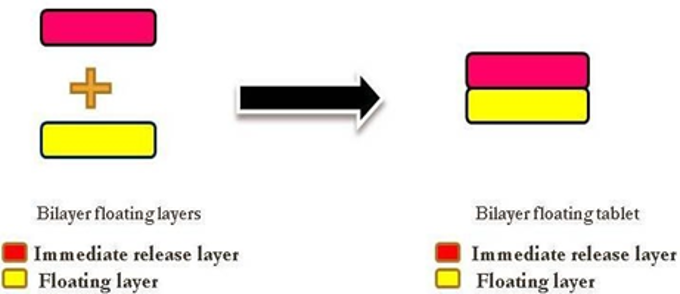Abstract
Bilayer tablets have been developed to achieve controlled delivery of different drugs with pre-defined release profiles. In the last decade, interest in developing a combination of two or more active pharmaceutical ingredients (API) in a single dosage form (Bilayer tablet) has increased in the pharmaceutical industry, promoting patient convenience and compliance. Bilayer tablet can be a primary option to avoid chemical incompatibilities between Active pharmaceutical ingredients by physical separation, and to enable the development of different drug release profiles (immediate release with controlled release). Despite their advantages, due to the use of different materials and complex geometric boundaries between adjacent layers, the mechanical structures of this drug delivery system have become quite intricate, requiring complicated tablet architectures as well as patient friendly. Gastro retentive drug delivery system prolongs the retention time of dosage forms in the stomach or upper gastro intestinal tract, as to improve solubility, bioavailability and the therapeutic efficacy of the drugs. Several pharmaceutical companies are currently developing Bilayer tablets. For a variety of reasons: patient extension, therapeutic, marketing to name a few. To reduce capital investment, quite often existing but modified tablet presses and are used to develop and reduce such tablets. This review is an attempt to illustrate the applications of Bilayer tablet by releasing the medicaments immediately for patient’s relief and also maintaining therapeutic level to an extended period of time by controlling the release of drug in a sustained manner for better patient compliance and acceptability.
Full text article
Authors

This work is licensed under a Creative Commons Attribution-NonCommercial-NoDerivatives 4.0 International License.

